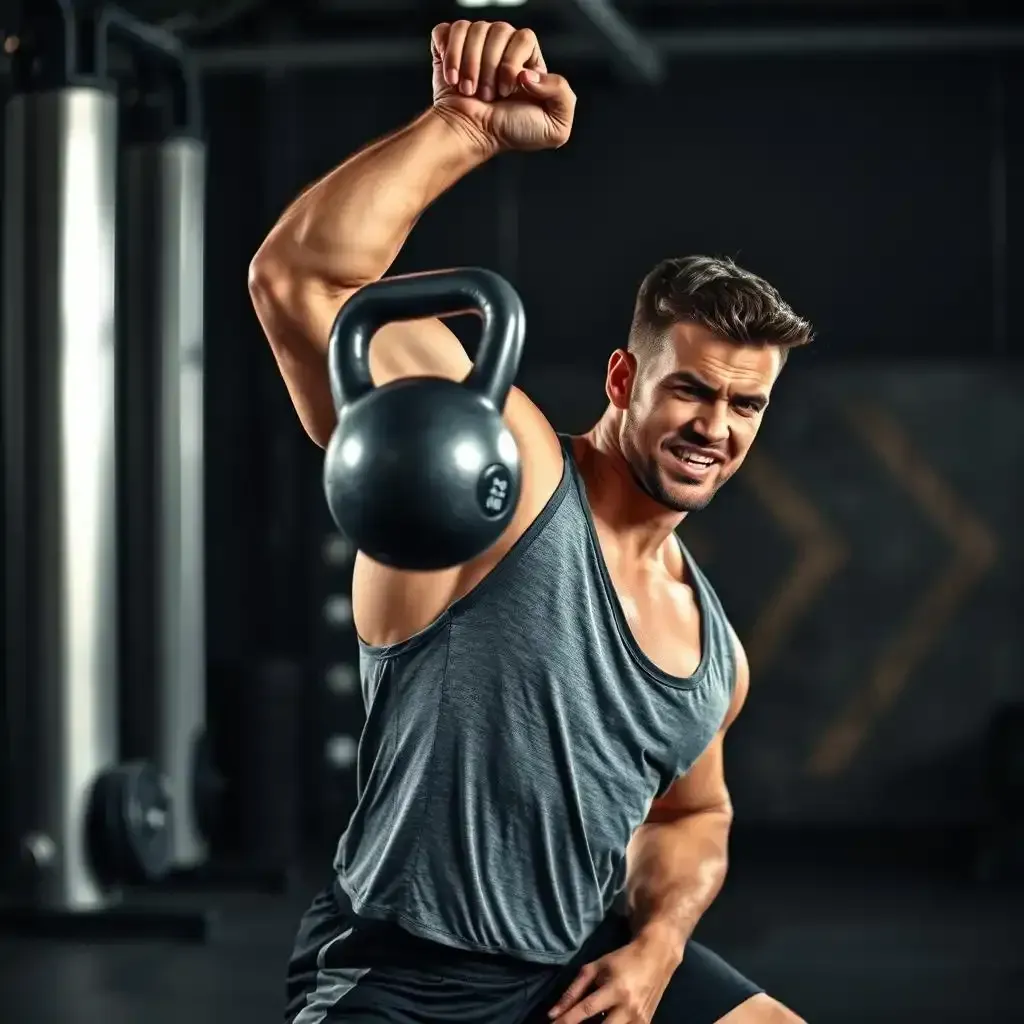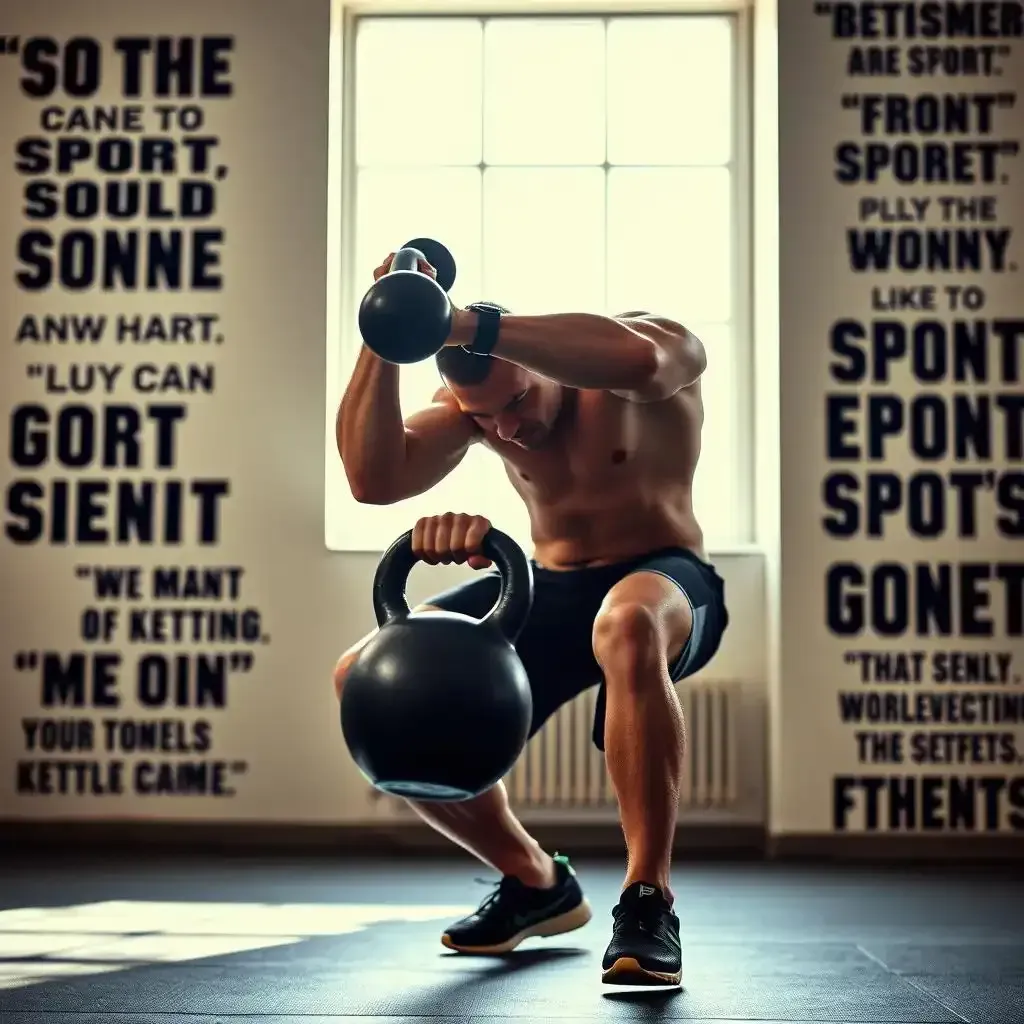Table of Contents
Ever wondered what makes kettlebell workouts so effective? They're not just about swinging heavy weights around – there's real science behind the seemingly simple movements. This article dives into the research, revealing the surprising benefits of kettlebell training and how it can transform your fitness trip. We'll explore the science behind the kettlebell swing, a staple exercise that builds strength, boosts endurance, and improves cardiovascular health. We’ll also look at other kettlebell exercises, emphasizing proper form to prevent injuries. Learn how to maximize your workouts and avoid common mistakes for optimal results. Ready to reveal the secrets of kettlebell workout science? Let's get started! For more detailed information and expert guidance, visit our website: kettlebellworkout.homes.
Kettlebell Workout Science: Revealing the MuscleBuilding Magic

Kettlebell Workout Science Revealing The Musclebuilding Magic
The Science Behind Kettlebell Swings
Imagine you're holding a small cannonball with a handle. That’s a kettlebell. But it's not just a funny-looking dumbbell. The magic happens when you swing it. Kettlebell swings are like a super-efficient workout machine, combining strength, endurance, and cardiovascular fitness in one fluid motion.
When you swing a kettlebell, you generate a unique force that travels through your body. This force is different from what you'd get from lifting a regular dumbbell. It’s like a mini earthquake, shaking and strengthening every muscle from your toes to your fingertips. The science tells us that the swinging motion engages your core, glutes, and hamstrings, making it a full-body exercise. According to a , kettlebell swings can improve your core stability and lower back strength, which are crucial for overall fitness.
Muscle Group | Primary Role | Secondary Role |
|---|---|---|
Core | Stability | Strength |
Glutes | Capability Generation | Stability |
Hamstrings | Force Transfer | Flexibility |
Kettlebell Swings: A Full-Body Workout
The kettlebell swing is a powerful exercise that doesn’t just build muscle; it also boosts your cardiovascular health. Think of it as a dynamic cardio workout that doubles as a strength session. When you swing a kettlebell, you're not just moving your arms. You’re engaging your entire body in a coordinated effort, which is why it’s so effective for burning fat and building endurance.
One of the key findings from a is that kettlebell workouts can improve your cardiovascular fitness. The study showed that participants who did kettlebell training had significant improvements in their VO2 max, a measure of how efficiently your body uses oxygen during exercise. This means that over time, kettlebell swings can help your heart and lungs work better, making you more resilient and energetic.
- Improves core stability
- Enhances lower back strength
- Boosts cardiovascular fitness
- Increases muscle strength and endurance
Kettlebell Workout Science: Mastering the Swing for Strength and Endurance
Okay, so you're thinking about kettlebells, huh? Smart move! I've been obsessed with them for years. It's not just about the "swing," it's about the *science* behind the swing – the way it fires up your whole body. It's like a full-body orchestra, and every muscle is playing its part. Think of a regular bicep curl – you're just working those biceps. But a kettlebell swing? It's a symphony of movement, engaging your glutes, hamstrings, core, and even your back, all at once! You'll feel the burn, but you'll also feel incredibly strong and energized. It’s not just about the size of the kettlebell, either; it’s about the perfect form, the right technique.
The best part? You don't need a fancy gym. Grab your kettlebell, find a little space, and you're good to go. I remember when I first started, I was using a ten-pounder in my apartment living room. Now I'm using heavier ones, but the feeling is just the same—powerful and energized. You might want to check out some before you start; it's important to learn correct technique to avoid injury. The key is finding that sweet spot where you're challenged but not hurting yourself. Think of it like learning to ride a bike – it takes practice, but once you get it, it's amazing!
- Builds serious strength and endurance.
- Improves your cardiovascular health.
- Engages muscles you didn't even know you had.
One thing I learned the hard way is that proper form is crucial. I tried to go too heavy, too fast, and ended up with a sore back. Don't be a hero; start light, focus on your form, and gradually increase the weight. Watch videos, read articles – whatever it takes to master that perfect swing. It's an investment in your body, and it’ll pay off big time. If you need some ideas for getting started, you can find some on my website. It's all about building a solid foundation before you move on to more advanced exercises.
Another really important thing is to listen to your body. If something hurts, stop! Don't push through pain; that's a recipe for injury. Rest when you need to, and don't be afraid to take breaks. Consistency is key, but so is listening to your body's signals. Remember, this is a progression, not a race. Small steps, steady progress – that's how you build lasting strength and endurance. Need a plan? Look at these to help you get started!
Mistake | Solution |
|---|---|
Rounding your back during the swing | Engage your core and keep your back straight |
Using too much weight | Start light and gradually increase the weight |
Swinging too fast | Focus on controlled movements |
Kettlebell Workout Science: Beyond the Swing – Exploring Diverse Exercises

Kettlebell Workout Science Beyond The Swing Exploring Diverse Exercises
Find the Kettlebell Clean and Press
Think of the kettlebell swing as the gateway drug to a world of dynamic exercises. But wait, there's more! The kettlebell clean and press is like a bicep curl and shoulder press combined, with a dash of hip strength for good measure. It's a full-body movement that hits your arms, shoulders, and core all at once. Imagine picking up a heavy grocery bag and then hoisting it onto a high shelf. That's essentially what a kettlebell clean and press feels like.
One of the key benefits of the clean and press is that it builds explosive capability. You start with a powerful hip hinge, just like in a swing, but instead of swinging the kettlebell back between your legs, you bring it up to your shoulder in one smooth motion. This is called the "clean." From there, you press the kettlebell overhead, engaging your shoulders and triceps. The clean and press is a fantastic way to build upper body strength and improve your overall fitness.
- Builds upper body strength
- Improves explosive capability
- Engages core and hips
If you're new to kettlebells, check out our to get a solid foundation before diving into more advanced exercises.
Try the Goblet Squat for Lower Body Strength
Let's talk about the goblet squat. This exercise is a game-changer for your lower body. It's like a regular squat, but you hold the kettlebell close to your chest, which changes the dynamics of the movement. Imagine hugging a heavy pillow while you do a squat. The kettlebell acts as a counterbalance, helping you maintain better form and engage your core more effectively.
The goblet squat is particularly great for beginners because it teaches you proper form and helps you build strength in your quads, hamstrings, and glutes. Plus, it's a low-impact exercise, which means it's easier on your joints. This makes it perfect for anyone who might be dealing with knee or hip issues.
Benefit | How It Helps |
|---|---|
Improves squat form | Helps maintain better alignment and balance |
Builds lower body strength | Strengthens quads, hamstrings, and glutes |
Low-impact | Easier on knees and hips |
For more detailed instructions on how to perform the goblet squat, check out our article.
Kettlebell Workout Science: Safety First – Injury Prevention and Proper Form

Kettlebell Workout Science Safety First Injury Prevention And Proper Form
Okay, so you're all fired up about kettlebells – awesome! But before you go swinging like a crazy person (which, let's be honest, is tempting!), let's talk safety. Think of your body as a finely tuned machine; you wouldn't race a Ferrari without checking the oil, right? Same goes for kettlebell workouts. Proper form is your best friend, and ignoring it is a fast track to injury. I've seen it happen – people trying to lift way too much weight, rushing through the exercises, and ending up with sore backs or tweaked shoulders. It's not pretty.
Start with lighter weights. Seriously! Don't try to impress anyone; focus on perfecting your technique. It’s like learning to ride a bike – you wouldn't start with a downhill mountain bike, would you? Master the basics first. There are tons of resources online – and on my site, you can check out my for a step-by-step guide to perfect form. It's all about slow and steady progress. Build that foundation, and then you can start adding weight gradually. Remember, it's a marathon, not a sprint, and a stronger you is a healthier you.
- Start with lighter weights
- Focus on proper form
- Listen to your body
Listen to your body. This is huge. If something hurts, stop! Don't push through the pain; that’s how injuries happen. Pain is your body's way of saying, "Hey, buddy, I need a break!" Rest, recover, and then come back to it. Think of it as a conversation with your body – a conversation you really should be having often. If you don't understand what your body is telling you, consider a consult with a physical therapist or personal trainer. Getting guidance from a professional is key to long-term fitness. And hey, if you're feeling overwhelmed, check out my for a gentle introduction to kettlebell training.
Warm up before you start, and cool down afterward. This isn't optional; it's essential. A proper warm-up prepares your muscles for the workout, improving your flexibility and reducing the risk of injury. A cool-down helps your muscles relax and recover. Think of it like stretching a rubber band before you use it – you don't want it to snap, do you? You can find some great warm-up and cool-down routines on my website. Check out my collection of and to enhance your workouts.
Warm-up | Cool-down |
|---|---|
Light cardio | Stretching |
Dynamic stretching | Foam rolling |
And finally, don't be afraid to ask for help. If you're unsure about something, don't hesitate to reach out to a qualified fitness professional. They can help you perfect your form, create a safe and effective workout plan, and guide you every step of the way. Remember, kettlebells are an amazing tool for building strength, but safety should always come first. So, let’s get you started on your kettlebell process, safely and effectively! Need some inspiration? Check out my for a structured approach.
I know it might seem like a lot, but trust me – taking these precautions will make a world of difference. It’s all about building that solid foundation of safe, effective training. Think of it as investing in your long-term health and fitness; it's an investment that’ll pay off big-time. Remember, the goal isn't to hurt yourself, but to get stronger and healthier. And if you’re still feeling a little unsure, maybe start with some to get comfortable with the movements.
- Consult a professional if needed
- Prioritize safety over speed
- Listen to your body
Final Thought
Kettlebell training isn't just a fad; it's a scientifically-backed method to improve your overall fitness. By understanding the science behind the movements and prioritizing proper form, you can harness the capability of kettlebells to achieve your fitness goals safely and effectively. Remember, consistency and proper technique are key to reaping the full benefits of this dynamic workout method. Keep exploring, keep moving, and keep challenging yourself. Happy swinging!